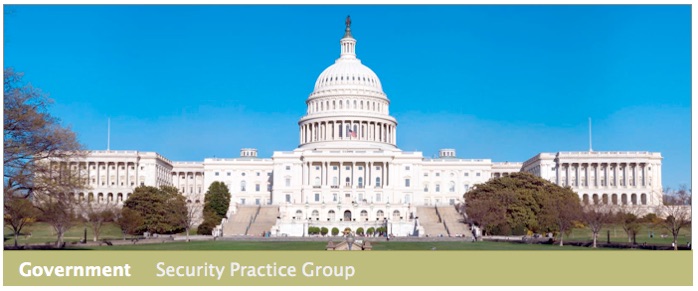Our Government Security Group focuses on securing US and foreign government facilities and personnel; improving law enforcement and intelligence operations; and, performing training, drills, and exercises to ensure mission performance and readiness - particularly within agencies with a counterterrorism focus.
Security Dynamics uses two separate methodologies to assess government facilities. First, a Risk Assessment Methodology (RAM), which has been modified to evaluate sector-specific threats, vulnerabilities, and consequences. Second, we apply our own proprietary vulnerability assessment methodology, which provides a narrative evaluation coupled with specific recommendations.
These applied methodologies identify security weaknesses and recommend corrective measures to mitigate the consequences of security breaches or incidents. Security Dynamics employs a risk-based approach to identify and evaluate the potential for attacks against government facilities from credible threats and their potential consequences.
This approach combines the likelihood of attack with potential consequences, and looks at the effectiveness of security systems, (e.g., physical security infrastructure, security guards, and local police force), in order to define and prioritize systems, equipment, and manpower requirements.
This methodology also identifies a recommended man/machine mix to maximize the effectiveness of current and projected security systems, such as CCTV, while minimizing recurring manpower costs. This approach helps our government clients achieve a return on investment (ROI) that will potentially see security systems paying for themselves over time. This is part of Security Dynamics’s unique approach to value-engineering security solutions.
In a typical facility security engagement, the Security Dynamics team will adhere to the following process during the course of a project:
-
•Planning: Security Dynamics will perform pre-deployment planning and evaluation activities that will include analyses of client-provided information and documentation about each of the facilities to be assessed. Reviews will include access controls, CCTV and other surveillance systems, fencing, lighting, visitor controls, etc. Scrutiny will be given to vehicle access relative to changes in threat level. Liaison will be conducted with the client’s facility security managers, federal, state, and local police, and other law enforcement and intelligence services, as required.
-
•Threat Assessment: Security Dynamics will conduct a pre-assessment of the credible threats associated with the client’s facilities and operations. This will include research to ensure the perceived threat profile is as accurate and current as possible. The goal is to provide reality-based recommendations coupled with risk mitigation strategies that apply to credible threats and not the universe of threats. This assists the client in husbanding resources and expediting risk-reduction measures.
-
•Site Characterization: Security Dynamics will conduct on-site surveys. The on-site survey will include interviews with the appropriate personnel for each facility.
-
•Consequence Assessment: Our team will analyze the data collected during the threat assessment/site characterization phases of the project to assess the potential consequences of attacks by identified credible threats, prioritizing them by the degree of their impact on persons, operations, budget, and environment.
-
•System Effectiveness: Security Dynamics will analyze the effectiveness of planned security systems, equipment, and personnel to identify deficiencies that increase a facility’s vulnerability to attack by previously identified threats.
-
•Risk Management: Based on the results of its analyses, Security Dynamics will develop a risk mitigation strategy that prioritizes recommended measures to correct identified deficiencies, minimize vulnerabilities, and significantly reduce the risk of a successful attack by the identified threats.
Our Government Security Practice Group includes foremost experts in security and counterterrorism who have extensive knowledge in:
-
•Threat and vulnerability assessments/audits
-
•Risk and consequence analyses using proprietary Risk Assessment Methodologies (RAM)
-
•Emergency Operations Plan (EOP) development
-
•Guard force assessments/audits
-
•Physical, personnel, and information security assessment and development
-
•Security policies & procedures evaluation, testing, and development
-
•Security and fire systems & CCTV engineering
-
•Visitor access controls – design and engineering
-
•ADA accessibility studies
-
•Emergency evacuation plans
-
•Training, drills, and exercises
Our team of experts have been featured on CNN, CBS News, NBC News, ABC News, The History Channel, NPR, ABC’s, ‘20/20’, and CBS’s ’60 Minutes’, and are frequent lecturers and instructors to both industry and government, and have testified before Congress and briefed the National Security Council on security issues.
Our team of experts’ backgrounds include service with CIA, Department of Defense, the White House, Army Special Forces, Navy SEALs, US Coast Guard, Justice Department, FBI, Justice Department, US Marshal’s Service, Federal Law Enforcement Training Center, various police departments – among other agencies, services, and private sector companies.
Have our experts become your experts.
Success Stories - I
The Security Dynamics team was chosen by the ruling monarch of a US-ally in the Middle East to design a massive National Security and Crisis Management Center.
In addition to the successful build-design, team members developed the organizational structure for a new national security council that reports directly to the National Command Authority.
Team members worked closely with each of that country’s government ministries and their senior officials, with special relationships created with the Intelligence and Interior Ministries.
Success Stories - II
Members of the Government Security Group performed threat and vulnerability assessments of this Head of Government’s home and offices, as well as the offices for the First Lady and other family members.
Physical, personnel, and information security issues were assessed, and a comprehensive risk mitigation report was produced. Team members subsequently audited security systems upgrades and installations.
Success Stories - III
When the Crown Prince of this country grew concerned about possible hostile surveillance directed against he and his family, members of the Government Security Group performed a series of Technical Surveillance Countermeasures (TSCM) at his home and office.
Due to the success of that engagement, the team members were further engaged to conduct TSCM sweeps throughout the Royal Palace Office Complex.

Copyright © 2017 | Security Dynamics LLC | Ft. Lauderdale | Florida | 33311 | USA | +1 754.206.3791 | info@securitydynamics.us





